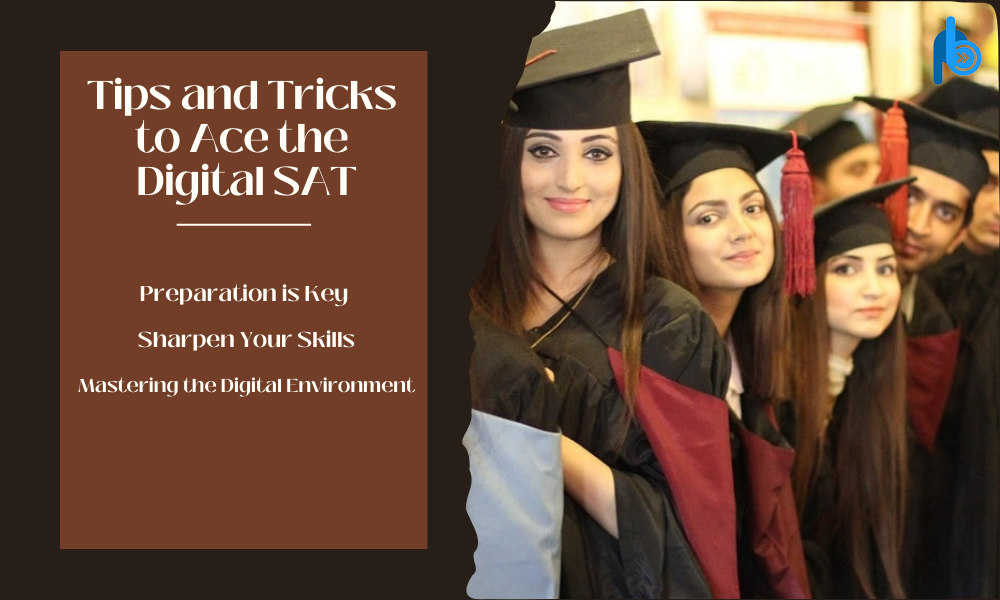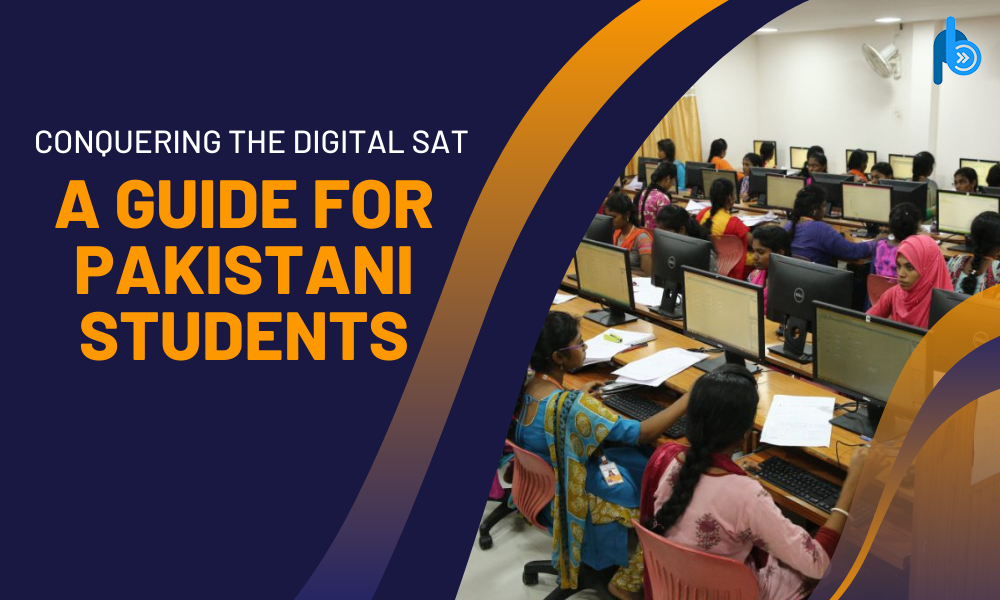The Scholastic Assessment Test (SAT) has undergone a digital revolution, transitioning from paper and pencil to a computer-based format. This shift might raise questions for Pakistani students aiming for top universities in Pakistan and abroad. Here’s a comprehensive guide to equip you for the digital SAT, including valuable tips and a breakdown of Pakistani universities that consider SAT scores.
What is the Digital SAT?
The digital SAT remains an mcq based standardized test widely used for college admissions in the United States and some prestigious Pakistani universities like:
Institute of Business Administration (IBA), Karachi ,Habib University, Karachi,Information Technology University (ITU), Lahore,National University of Sciences and Technology (NUST), National University of Computer and Emerging Sciences (FAST-NUCES) and many more national and international universities.
The digital format offers several advantages:
- Accessibility: Everyone has access to a built-in calculator throughout the math section.
- Efficiency: The test is shorter, lasting around 2 hours compared to the previous 3 hours.
- Flexibility: Digital passages allow for zooming and highlighting for better comprehension.
- Faster Results: Scores can be processed and returned more quickly.
Understanding the Digital SAT Format:
The digital SAT consists of two main sections: Reading & Writing and Math.
- Reading & Writing (60 minutes): This section assesses reading comprehension, writing skills, and analysis of written arguments. It includes multiple-choice questions and grid-in tasks.
- Math (No Calculator – 20 minutes, Calculator – 35 minutes): This section evaluates problem-solving abilities in various mathematical concepts. The first part doesn’t allow calculators, while the second part does (a built-in calculator is provided).
Tips and Tricks to Ace the Digital SAT:

Preparation is Key:
- Start Early: Dedicate sufficient time for focused preparation. Aim for at least 3-4 months for a strong foundation.
- Official Resources: Familiarize yourself with the College Board’s official website (https://satsuite.collegeboard.org/sat) for sample questions, practice tests, and scoring guidelines.
- Practice Tests: Take full-length practice tests under timed conditions to simulate the actual test environment. Analyze your performance and identify areas for improvement.
Sharpen Your Skills:
- Reading Comprehension: Read a variety of newspapers, magazines, and academic articles to improve your reading speed and understanding of complex texts. Practice summarizing key points and identifying author’s arguments.Sometimes, students face this hurdle of fluency when it comes to reading passages and that may consume a portion of their time. I would recommend that you start reading a novel or a self-help book 2 months before the exam-two pages at a time in order to keep your reading muscle working.
- Writing Skills: Hone your writing skills through practice essays focusing on clarity, organization, and grammar. Consider peer review or professional guidanceKnow your basic grammar rules and take as many practice tests as you can and shortlist the most repeated type of questions and practice that specific grammar rule until its on your fingertips.
- Math Drills: Revisit core math concepts and practice solving problems from various areas like algebra, geometry, and data analysis.Search youtube for short tricks to solve longer problems to save time in the actual exam day. Like every other section, practice is the key! You will know that every section follows a specific pattern and nothing comes particularly out of the box.
Mastering the Digital Environment:
- Get Comfortable with Computers: If you’re not accustomed to taking computer-based tests, practice using a computer beforehand. Familiarize yourself with highlighting, zooming, and using the built-in calculator.
- Time Management: Practice time management skills during practice tests. Allocate time strategically for each section and question type.
- Stay Calm: The digital format might feel unfamiliar at first. Practice relaxation techniques such as deep breathing to manage test anxiety.
Differences Between the Digital SAT and the Paper-Based SAT
Format and Delivery:
- Digital SAT: Taken on a computer or tablet at designated testing centers or possibly at home under strict proctoring.
- Paper-Based SAT: Taken with pencil and paper at designated testing centers.
Content and Structure:
- Digital SAT: Maintains the same content areas (Evidence-Based Reading and Writing, Math) and may include an optional Essay. The structure is adjusted for digital delivery, potentially with adaptive testing.
- Paper-Based SAT: Fixed set of questions with a traditional structure and optional Essay.
Adaptive Testing:
- Digital SAT: May use adaptive testing, where the difficulty of questions adjusts based on the test-taker’s performance.
- Paper-Based SAT: Fixed question difficulty throughout the test.
Timing and Breaks:
- Digital SAT: Similar total duration to the paper-based version, with scheduled breaks, but specifics may vary.
- Paper-Based SAT: Set timings for each section and breaks are predetermined.
Scoring:
- Digital SAT: Scored on the same 400-1600 scale, combining Evidence-Based Reading and Writing and Math scores.
- Paper-Based SAT: Scored similarly, with no changes in the scoring scale.
Additional Resources:
- Test Prep Courses: Enroll in SAT prep courses offered by reputable institutions in Pakistan like IBA grads, Anees hussain etc..
- Online Resources: Explore online resources like Khan Academy’s free SAT prep course (https://support.khanacademy.org/hc/en-us/articles/17921365165581-Moving-from-Official-SAT-Practice-to-Official-Digital-SAT-Prep-on-Khan-Academy) and The Princeton Review’s digital tutorials (paid service).
Pakistani Universities Accepting SAT Scores:

While the SAT isn’t mandatory for all Pakistani universities, several prestigious institutions consider it for admissions and scholarship opportunities. Here’s a recap of some of the many universities mentioned earlier that accept SAT scores:
- IBA, Karachi
- Habib University, Karachi
- ITU, Lahore
- NUST
- FAST-NUCES
Beyond the SAT:
While a strong SAT score is valuable, remember it’s just one piece of the admissions puzzle. Universities also consider your high school GPA, have their own entry test exams as well, extracurricular activities, essays, and recommendation letters. Maintain a strong academic record and showcase your well-rounded profile.
Conclusion:
The digital SAT presents a new chapter for Pakistani students seeking admission to top universities. By dedicating yourself to focused preparation and utilizing the resources available, you can navigate this new format with confidence and achieve a score that reflects your academic potential. Remember, consistency, strategic preparation, and a positive mindset are key ingredients for success. Best of luck in your SAT journey!
More Blogs from this writer:




























